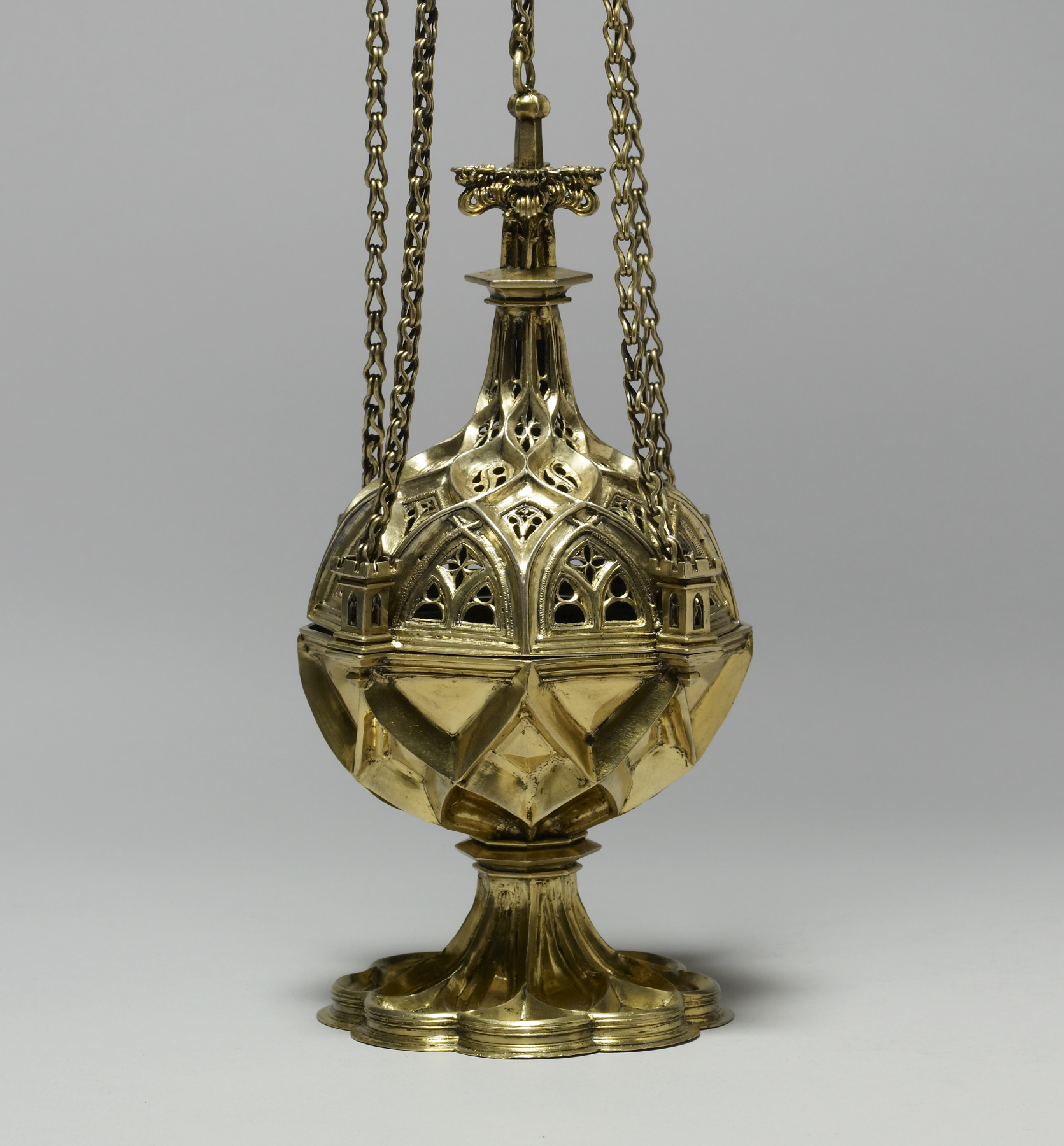Censer
This censer made in Germany is typical of the style popular in western Europe at the end of the fifteenth century. The intersecting raised bands mimic the complex vaulting systems used in late Gothic churches, and the openwork areas are reminiscent of the tracery found in the windows of these buildings.
Inscription
Provenance
Provenance (from the French provenir, 'to come from/forth') is the chronology of the ownership, custody, or location of a historical object. Learn more about provenance at the Walters.
Frédéric Spitzer, Paris, by purchase; Sale, Paul Chevallier and Charles Mannheim, April 17, 1893, no. 347; Charles Borradaile, Brighton, by purchase; George Robinson Harding, London, by purchase; Henry Walters, Baltimore, 1912, by purchase.
Exhibitions
| 2016-2017 | A Feast for the Senses: Art and Experience in Medieval Europe. The Walters Art Museum, Baltimore; The John and Mable Ringling Museum of Art, Sarasota. |
| 2007 | Encompassing the Globe. Freer Gallery of Art, Washington. |
| 1998-1999 | Love and War: A Manual for Life in the Late Middle Ages. National Gallery of Art, Washington. |
| 1950 | All that Glisters: Thirty Centuries of Golden Deception. Cooper Union Museum for the Arts of Decoration, New York. |
Conservation
| Date | Description | Narrative |
|---|---|---|
| 2/14/1966 | Treatment | cleaned; coated |
Geographies
Germany (Place of Origin)
Measurements
Overall H with chain: 28 3/4 in. (73 cm); Body H: 10 x Diam: 4 9/16 in. (25.4 x 11.6 cm); Hanger H: 2 11/16 x Diam: 3 1/4 in. (6.8 x 8.3 cm)
Credit Line
Acquired by Henry Walters, 1912
Location in Museum
Centre Street: Third Floor: 15th-Century Art of Northern Europe
Accession Number
In libraries, galleries, museums, and archives, an accession number is a unique identifier assigned to each object in the collection.
In libraries, galleries, museums, and archives, an accession number is a unique identifier assigned to each object in the collection.
57.699




